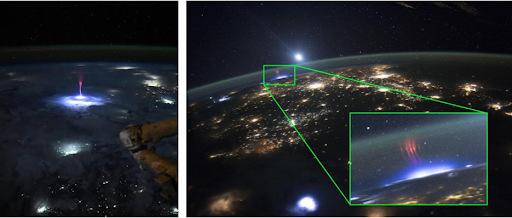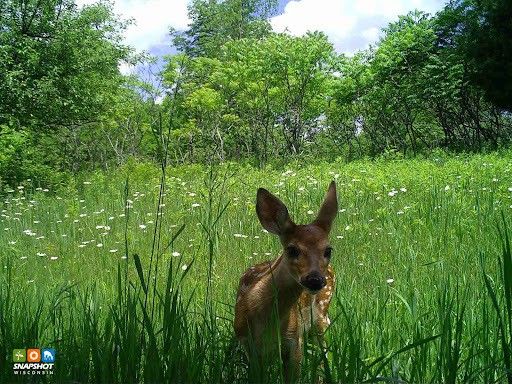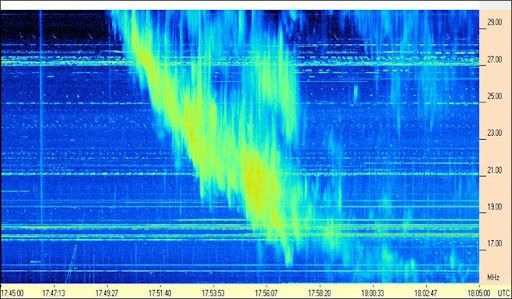
Did you see that gorgeous photo NASA astronaut Nichole Ayers took on July 3, 2025? Originally thought to be a sprite, Ayers confirmed catching an even rarer form of a Transient Luminous Events (TLEs) — a gigantic jet.
“Nichole Ayers caught a rare and spectacular form of a TLE from the International Space Station — a gigantic jet,” said Dr. Burcu Kosar, Principal Investigator of the Spritacular project.
Gigantic jets are a powerful type of electrical discharge that extends from the top of a thunderstorm into the upper atmosphere. They are typically observed by chance — often spotted by airline passengers or captured unintentionally by ground-based cameras aimed at other phenomena. Gigantic jets appear when the turbulent conditions at towering thunderstorm tops allow for lightning to escape the thunderstorm, propagating upwards toward space. They create an electrical bridge between the tops of the clouds (~20 km) and the upper atmosphere (~100 km), depositing a significant amount of electrical charge.
Sprites, on the other hand, are one of the most commonly observed types of TLEs — brief, colorful flashes of light that occur high above thunderstorms in the mesosphere, around 50 miles (80 kilometers) above Earth’s surface. Unlike gigantic jets, which burst upward directly from thundercloud tops, sprites form independently, much higher in the atmosphere, following powerful lightning strikes. They usually appear as a reddish glow with intricate shapes resembling jellyfish, columns, or carrots and can span tens of kilometers across. Sprites may also be accompanied or preceded by other TLEs, such as Halos and ELVEs (Emissions of Light and Very Low Frequency perturbations due to Electromagnetic Pulse Sources), making them part of a larger and visually spectacular suite of high-altitude electrical activity. The world of Transient Luminous Events is a hidden zoo of atmospheric activity playing out above the storms. Have you captured an image of a jet, sprite, or other type of TLE? Submit your photos to Spritacular.org to help scientists study these fascinating night sky phenomena!


